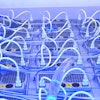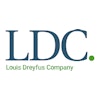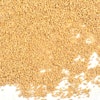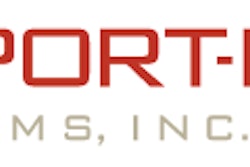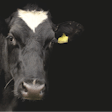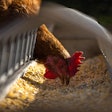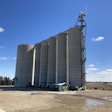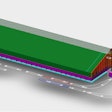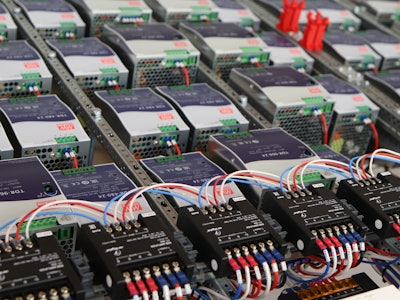
That’s one reason feed mill owners have been citing energy efficiency as a top priority more frequently when commissioning a greenfield facility or renovation project, according to Jonathan Cowles, director of sales forWL Port-Land Systems.
The trend also follows the industry’s increased attention and transparency surrounding sustainability. TakeADM’s Strive 35for instance, which highlights the company’s goal to reduce absolute greenhouse gas emissions by 25%, energy intensity by 15%, water intensity by 10%, and achieve a 90% landfill diversion rate, all by 2035.
Turning to building and design firms for solutions to these and other sustainability initiatives may be the first step in the right direction.
When designing a feed mill, factors like layout, motor selection and lighting all make a difference in reducing energy consumption while the industry awaits the availability of alternate fuel sources to power the commercial-scale feed mills of tomorrow.
Smart layout
A feed mill’s layout has a big impact on energy usage.
Layout optimization for energy consumption is front and center forADM, according to Ryan Lane, president of animal nutrition North America.
“When we engage with any of our partners that help us with the pre-engineering of a facility, we look at the logistics of the plant, how everything will move around, and its impact on energy use, water use and waste management,” Lane says.
Loren Field, P.E., executive vice president ofYounglove, recommends arranging equipment and bins with the shortest distance between them and the fewest quantity of conveyors. This saves energy related to transporting raw materials and ingredients from process to process.
Field also advises his clients to use chain conveyors versus screw conveyors for material handling and gravity flow bucket elevator discharges because they both use less energy to move product.
Incorporating windows or translucent metal building panels into the layout can also provide energy savings by capturing natural light in warehouses, reducing the need for electrical lighting.
LED lighting
Although a smaller portion of energy usage, lighting has made great strides in efficiency and use at least 75% less energy than incandescent lighting.
“All mills should use LED lighting,” says Field. “The LED light will provide illuminated workspaces that cost less than traditional high-pressure sodium or metal halide fixtures, plus provide longer bulb life.”
LED light fixtures can even be programmed to dim or shut off when activity in the space ceases. Then when motion is sensed, the fixture lights up to 100% for the duration of the activity.
Lighting is important, but WL Port-Land’s Cowles notes that the nonmotor electrical load in a feed mill is typically less than 15% of the total load, and “identifying ways to make grinding and pelleting operations more efficient will have a greater impact since these systems combined are typically more than 50% of the total load,” he says.
Motors and drives
Producing animal feed on a commercial scale on a weekly basis requires some of the largest and most powerful motors and drives on the market. Motor-related electrical load makes up more than 85% of a facility’s total load, and facility owners are increasingly more cognizant of demand charges related to the inrush current when starting these massive motors.
Installing variable frequency drives (VFD) for large horsepower or high inertia equipment like bucket elevators, grinders, pellet mills, pellet cooler fans and mixers is one solution. A VFD controls the speed of a motor by varying the frequency supplied to it.
“VFDs provide flexibility to adapt to the fluctuating load profile of the systems allowing for much greater efficiency at partial loads,” Cowles explains.
VFDs offer benefits like smoother decelerations and accelerations in conveyor applications, reducing the backlash you may get with V-belt drives.
“For mechanical drives, consideration can be given to utilizing complete gear driven assemblies rather than using a belt drive between the motor and gear reducer,” Cowles says.
“The operational efficiency of a V-belt drive can be less than 90% for irregularly maintained belt drives while a gear drive is 98% to 99% efficient for each reduction point.”
Younglove’s Field notes that belt drives can also be optimized for energy efficiency in certain applications.
“If belts must be used, a poly chain belt will provide the best efficiency,” he says. “Gearing in the drive should be helical beveled gears and synthetic oil should be used as the drive will run cooler, thus reducing wasted energy.”
Fuel of the future
Engineering the latest designs and technology into feed mills to reduce energy consumption will continue to trend upward, however, with increasing pressure to become less reliant on fossil fuels, engineers eventually expect to see wider availability of alternative fuels.
The groundwork for greater access to wind and solar power is already being laid. In 2022, the U.S. Energy Information Administration expects 46.1 gigawatts of new utility-scale electric generating capacity to be added to the U.S.’s power grid.
Nearly 50% of the planned 2022 capacity additions are from solar while wind accounts for 17% of the increase.
But solar and wind power are not without disadvantages.
“These sources are heavily dependent on optimal weather conditions,” Field says. “Because of that, they can’t be relied upon as a constant power source. To help resolve this problem, much research is being done on battery energy storage systems.
“Currently battery energy storage systems are not feasible for use on an industrial scale, however, should additional battery technology breakthroughs occur, the feasibility of this alternative energy source could change,” he says.
Those breakthroughs might come sooner than expected.
The EIA reports that U.S. utility-scale battery storage capacity will grow by 5.1 GW in 2022, an 84% increase over current capacity. ■
ANNOUNCING THE FEED MILL OF THE FUTURE DIGITAL SUPPLEMENT
In January 2022, WATT feed brands’Feed & GrainandFeed Strategymagazines joined forces to launch the monthlyFeed Mill of the Future数字补充。每个版本的目标是提供一个nimal feed industry stakeholders with forward-looking content, market insights and a spotlight on the leading-edge technologies shaping the global feed industry of tomorrow.


